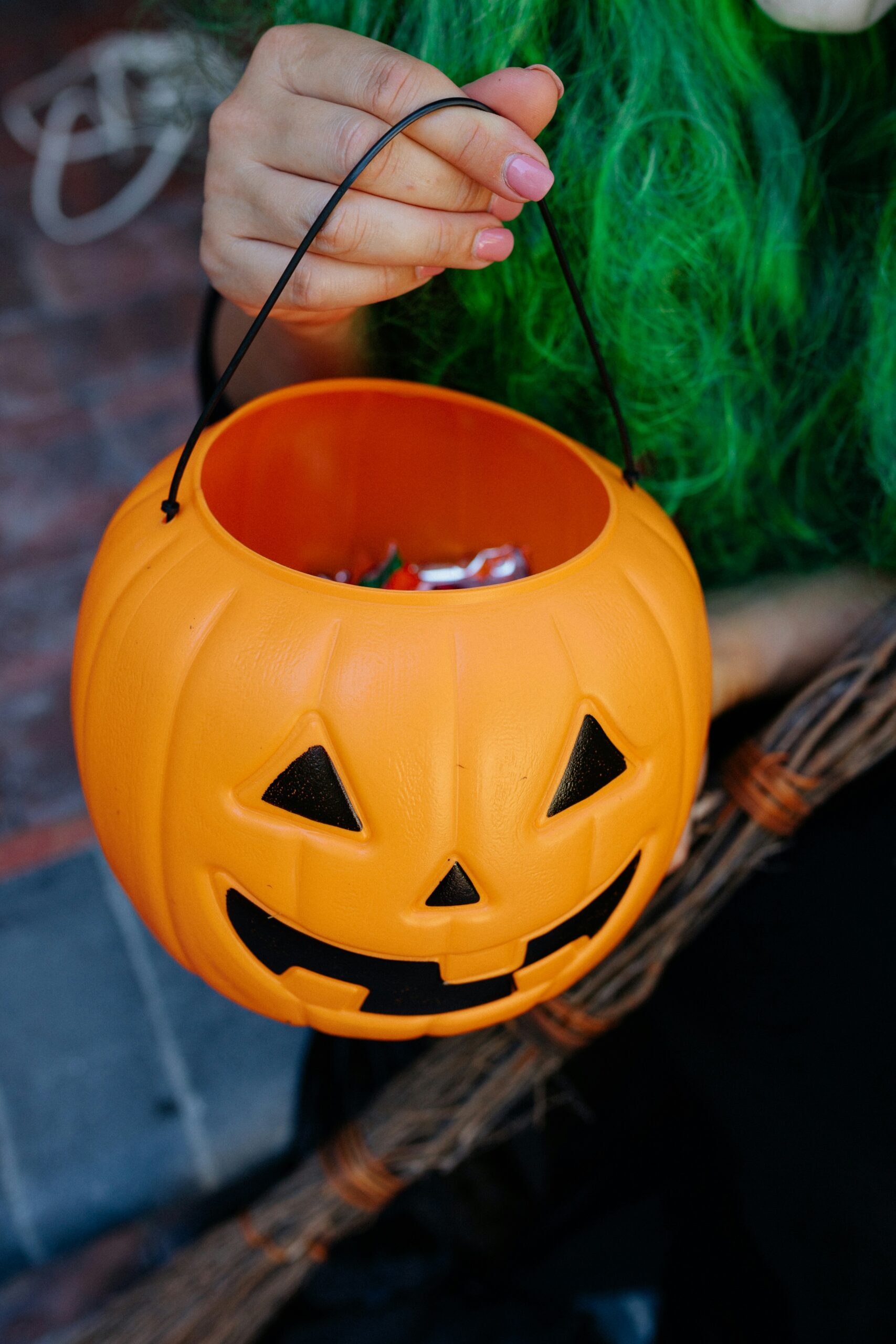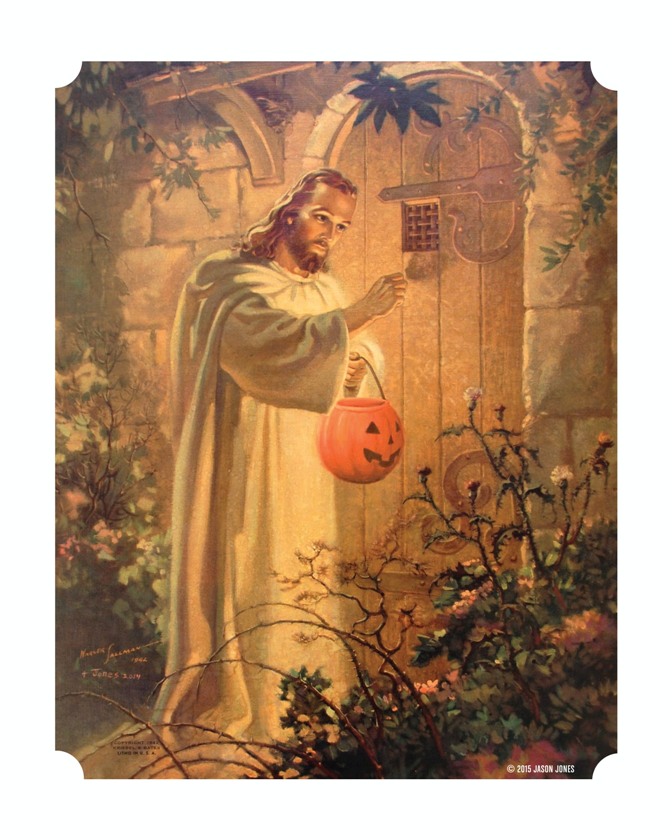I rifled frantically through our paltry dress up box, desperately searching for a costume. I had completely forgotten to make a plan, and now dusk was falling in earnest. The porch lights were flicking on and I could hear the shouts of delight outside.
My 10 year old body pulsed with excitement and agony in equal measure. The options that presented themselves to my scrambling fingers, largely the discarded hand-me-downs from Halloweens past, were uninspiring. Finally, I settled on an ill-fitting witch’s robe and hat. It wouldn’t have been my first (or 39th) choice, but I forgot that as soon as I ran outside and joined the crescendoing pandemonium all around me.

Some of my most vivid memories from childhood come from trick or treating. My witch costume misadventure, but also that one house on Jasmine Court that always handed out the king size candy bars. Or my brazen nonchalance going door to door in my 17th year, receiving scowls and hesitant handfuls of candy.
It’s no secret that Halloween in general, and trick or treating in particular, has received mixed reviews in the past. Many churches eschew the whole business as demonic. During my trick or treating prime (the 1990s), untold parents cut open candy bars in search of that elusive razor blade.
As for me, I’ve always been an enthusiastic supporter of the candy-coated tradition. And I’m starting to think it might be exactly what we need more of these days.
Sociologists have been warning us for decades about the marked decline in social trust in the US. The causes are many. Technologies like home televisions, the internet, and smart phones have fueled isolation. Rising secularization shifted centers of community away from religious communities with no clear substitute. New urbanists have even identified things as seemingly benign as the back deck and the attached garage as contributing to declining interactions between neighbors. Now, with social media and AI turbocharging disinformation, it feels like social trust is hitting new lows.

One of America’s most famous sociologists, Robert Putnam, describes social trust–the basic belief in the reliability and trustworthiness of others–as the bedrock of the most critical component for a healthy society: social fiber. Social fiber is the connective tissue binding together individuals and institutions in society in relationships of reciprocity, trust, and mutual benefit. Social fiber is woven in myriad places: think public schools, city council meetings, unions, PTAs, local libraries, block parties, and even bowling leagues (as Putnam argues in his aptly named book about social fiber, Bowling Alone). Yet when social trust is lost, social fiber frays. The consequences of frayed social fiber will sound familiar: social isolation, the rise of antisocial behavior like mass shootings, political polarization, and the atomization of society.
So, back to trick or treating.
At its core, trick or treating is an exercise in building social fiber. It is a communal activity undertaken with our neighbors that gets us away from our TVs and our smart phones. It moves us from our private back yards to our shared sidewalks. Kids physically walk door to door, asking their neighbors for good things. And their neighbors give it to them! Kids come to us, asking us for good things. And when we give it to them, we remember how it feels to give good things to our neighbors.

My family moved into our house in September 2022. My wife and I met a few neighbors here and there that September and October, but we met everyone on October 31 as we brought our kids trick or treating through the neighborhood. At each door, we introduced ourselves, shook hands, learned names, and received smiles and candy in equal measure. In short, we built social fiber. It’s social fiber that has only strengthened since at block parties and neighborhood bonfires.
Trick or treating will not knit America’s social fiber together again. Not by itself. But the lessons of trick or treating just might. Lessons like exchanging good things with our neighbors, locating our bodies in our communities alongside others, and finding joy and delight in those around us.
So, come October 31, I’ll be out there. I hope you will be too.


5 Responses
Halloween has always been my second favorite holiday to celebrate (behind Christmas). Other holidays have better meanings, but we haven’t figured out that well how to celebrate them. Here’s why Halloween is up there. I have a sweet tooth. Fall is my favorite time of the year. For a long time orange and purple were my favorite colors (now it’s yellow). Pumpkins (carved, uncarved, or used to spice up foods) are also a favorite. I like the goofiness of dressing in costumes (I appreciate how costumes have been used in recent protests to disarm the principalities and powers). Now you’ve given me another good reason to like the holiday — it gets us out to meet neighbors and create social trust. So I’ve been disappointed by how many houses just leave the lights out as a way of living out Tom Petty’s lyrics, “Don’t come around here no more.” But Jesus said, let your light so shine.
Halloween has always been a favorite of mine. As a preacher’s kid, even my dad was all for the fun! My mom made me several costumes, and if all else failed, we could always go as a bum and use an old suit coat of my dad. We’d put charcoal on our faces to imitate a beard and off we’d go! Great fun filling a pillow case with goodies. No evil intent, no shenanigans, just fun running around to as many houses as we could with family and friends! A truly magical time! Thanks for your article!
Hah! We called them Hobos, and that was the only “costume” we could afford!!
Thanks! Hey, Nevada Barr –who writes mostly crime-mystery books with protagonist Anna Pigeon (National Park Ranger) has a great chapter on Halloween that resonates with this. It’s in her book –published some 25 years ago: Seeking Enlightenment, Hat by Hat: A Skeptic’s Path to Religion. I like that book a lot. Short but so readable and reflective chapters–coming from one on the outside moving in, not (as for most of us) from the inside moving … (where? who knows?) But somehow RJ-folk friendly, I think. Consider this a plug for it–maybe it could use a review here!
I love this refreshing take on the community aspect of Trick or Treat.
While growing up in GR in the 1960s, I missed out on the magic of Halloween which was clouded over with shame, shame – double shame by the sign on the Dominie’s front lawn: “Trick or Treaters, go away. Today is Reformation Day.”